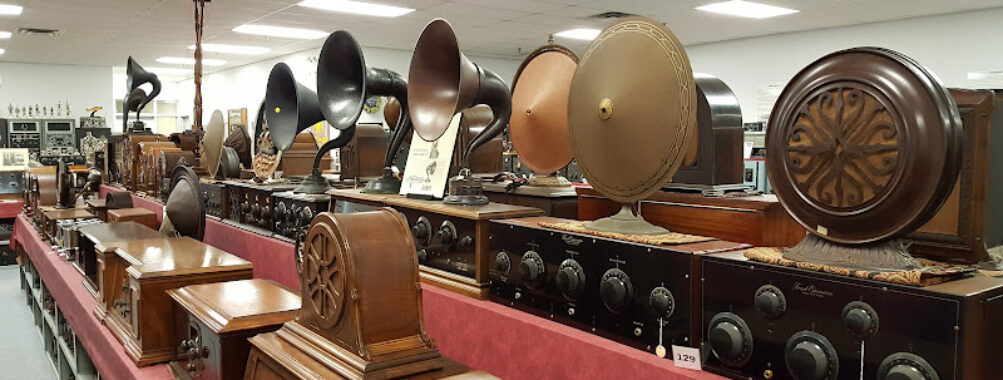
Hammond Museum Of Radio
Table of Contents
Description
The Hammond Museum of Radio in Guelph, Ontario is one of those places that feels like stepping into a time capsule, only instead of dusty relics, you’re surrounded by living, buzzing history. With more than 2,000 pieces on display, this museum traces the evolution of radio technology from the spark era through to early solid-state equipment. It’s not just a static collection either—many of the radios and transmitters are still operational, which makes walking through the exhibits feel a bit like being backstage at the dawn of modern communication.
What makes the museum stand out is its personality. You can tell that it was put together with a lot of care and passion for the subject. It’s not some huge, impersonal institution where you shuffle past glass cases. Instead, it feels approachable, like you’re being invited into someone’s private collection (albeit a very large one). The displays include everything from crystal radios and early broadcast sets to military communication gear and amateur radio equipment. There’s a certain magic in hearing the crackle of a century-old set come to life—it’s the kind of thing that makes you realize just how far technology has come, and yet how ingenious those early designs really were.
Visitors often remark on how surprisingly engaging the place is. Even if you’re not a radio buff, there’s something oddly charming about seeing the craftsmanship of these machines up close. The knobs, dials, and polished wood cabinets tell stories of a different era, when families would gather around a radio the way we gather around a TV or smartphone today. Personally, I found myself lingering longer than expected, because each corner seemed to reveal some quirky little detail or rare piece of gear I’d never seen before.
Key Features
- Over 2,000 radios, transmitters, and related artifacts spanning more than 100 years of history
- Operational receivers that let you experience the sound of early radio firsthand
- Military, amateur, and domestic radio collections showcasing the diversity of use
- Rare crystal radios and early wireless sets on display
- Educational exhibits explaining the progression from spark-gap transmitters to solid-state technology
- Hands-on opportunities to see and hear equipment in action
Best Time to Visit
If you’re planning a trip, late spring through early fall tends to be the sweet spot. The museum itself is indoors, so technically you can go any time of year, but pairing your visit with a stroll around Guelph makes it extra rewarding. Summer weekends can be a bit busier, though not in an overwhelming way—it’s not the kind of place that draws massive crowds. Personally, I think a weekday afternoon visit is perfect. You get more space to wander, and you can soak in the details without feeling rushed.
Winter visits have their charm too, especially if you’re the type who enjoys escaping the cold for a few hours. There’s something cozy about being surrounded by the warm glow of vintage radio dials while the snow falls outside. But if you want to combine your museum trip with outdoor activities or other attractions in town, warmer months are definitely more practical.
How to Get There
The museum is located in Guelph, Ontario, which is about a 40-minute drive west of Toronto and roughly three hours east of Detroit. If you’re coming by car, it’s an easy drive along major highways, and parking is straightforward once you arrive. For those relying on public transit, you can take a train or bus into Guelph’s main station and then grab a short taxi or rideshare to the museum.
I’ve done the drive from Toronto myself, and it’s a smooth trip with some nice scenery along the way—rolling farmland, small towns, and that sort of laid-back Ontario vibe. If you’re the kind of traveler who likes to make a day of it, you can easily pair the museum with visits to downtown Guelph’s cafes, shops, and riverside trails.
Tips for Visiting
First off, give yourself more time than you think. I figured I’d breeze through in under an hour, but ended up staying closer to two because there was just so much to take in. Even if you’re not a hardcore radio enthusiast, the sheer variety of pieces keeps things interesting.
Bring a curious mindset. Some of the exhibits may seem technical at first glance, but once you start reading the info panels or chatting with staff, it all clicks. And don’t be shy about asking questions—the people who work here are incredibly knowledgeable and genuinely excited to share stories. I remember asking about one odd-looking transmitter and getting a mini history lesson that made me appreciate it ten times more.
Photography is usually allowed, and honestly, the vintage equipment makes for some great shots. Just be mindful of reflections from the glass cases. If you’re traveling with kids, be prepared to explain a few “ancient” concepts like tuning a dial or listening to shortwave signals—it’s actually a fun way to show them how communication evolved before smartphones.
Lastly, consider pairing your visit with other attractions in Guelph. The city has a lively arts scene, beautiful parks, and some excellent local restaurants. A day that combines history, fresh air, and good food is always a win in my book. And if you’re like me, you’ll leave the Hammond Museum of Radio with a newfound appreciation for the humble radio—something most of us take for granted until we see just how revolutionary it really was.
Location
Places to Stay Near Hammond Museum Of Radio
Find and Book a Tour
Explore More Travel Guides
No reviews found! Be the first to review!